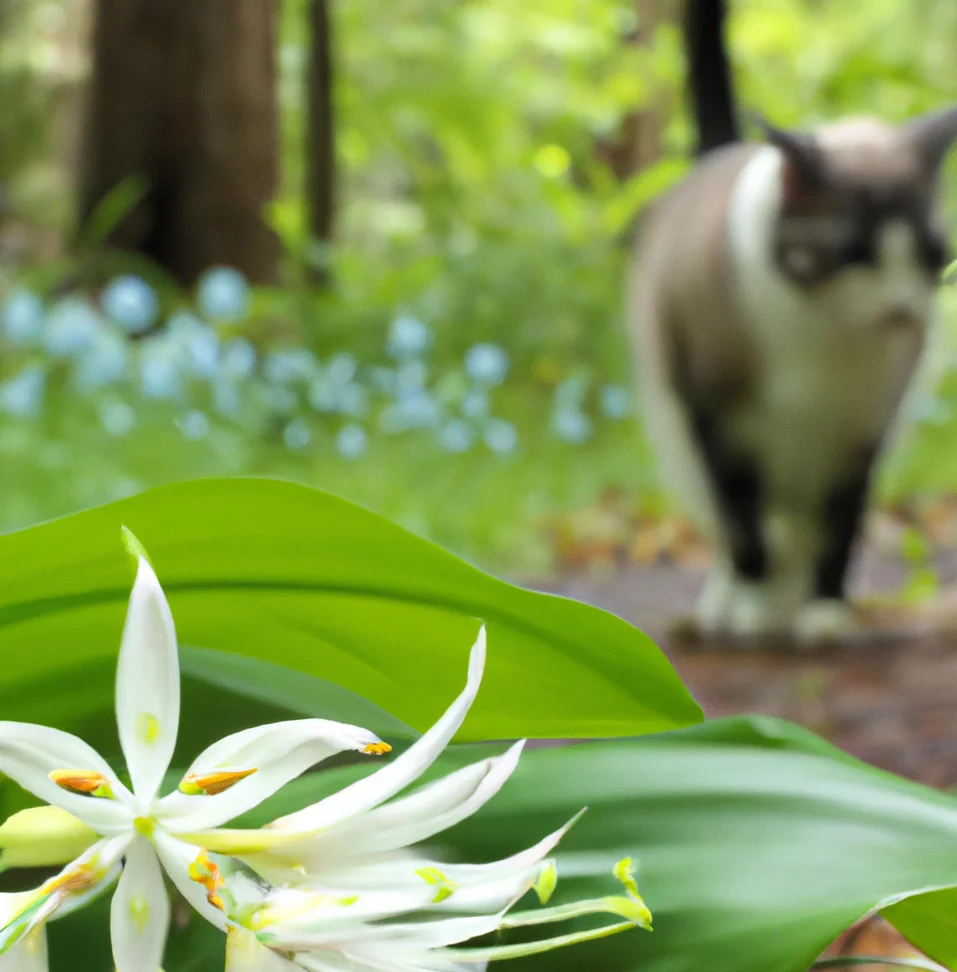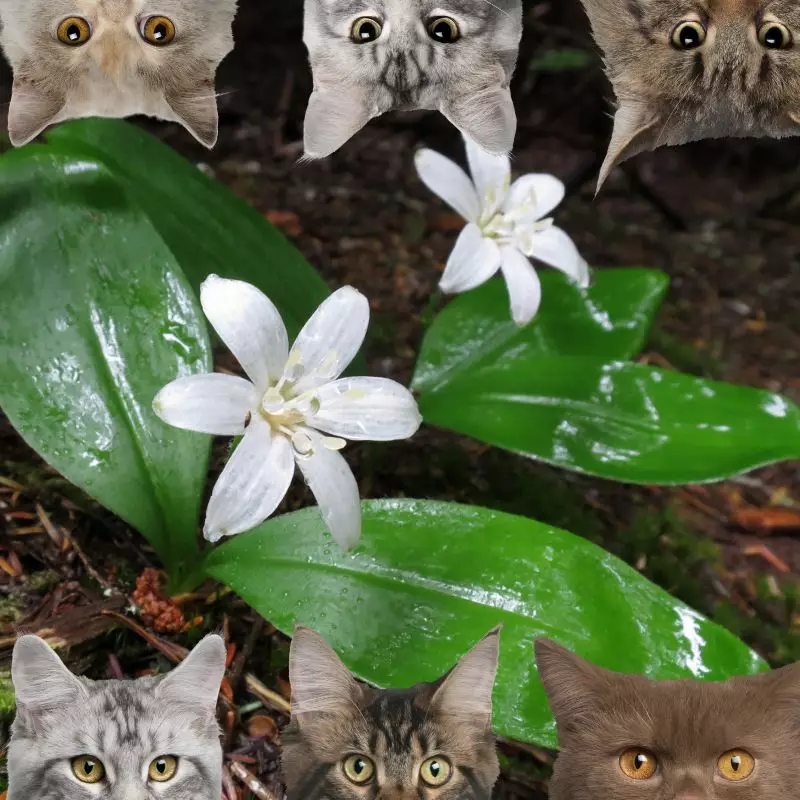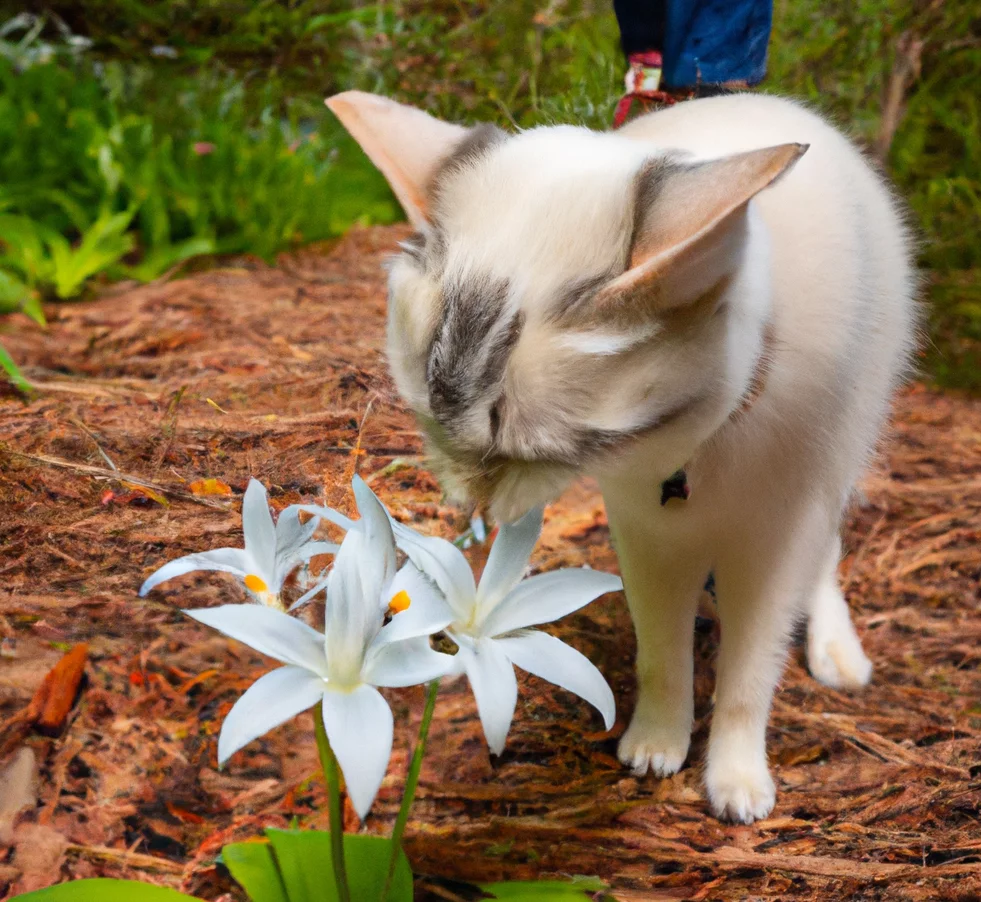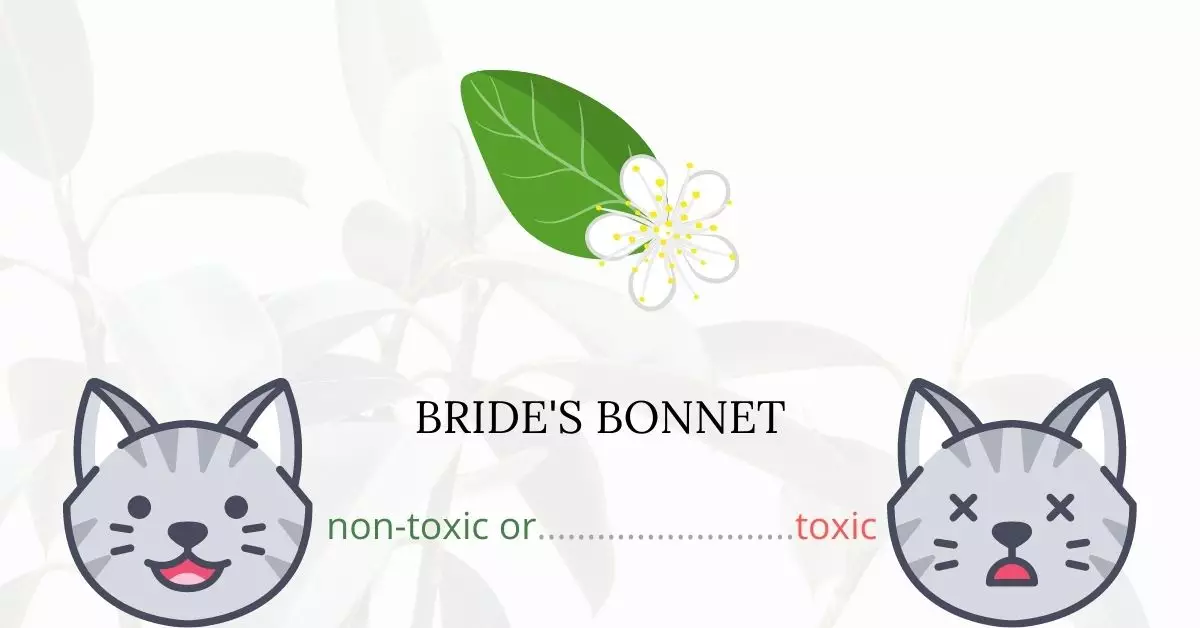Bride’s Bonnet (also known as Queen’s Cup) is not toxic for cats. In fact, it is recognized as non-toxic by authoritative organizations such as the American Society for the Prevention of Cruelty to Animals (ASPCA).
This article has been crafted in collaboration with a team of experienced DVMs (doctors of veterinary medicine) to ensure that we provide accurate and up-to-date information on the potential risks associated with various plants, including the Bride’s Bonnet. Through their contributions, combined with extensive research on high-authority websites like ASPCA and PetMD, we aim to address concerns regarding the effects of specific plants on feline companions.
It’s noteworthy to mention that while Bride’s Bonnet belongs to the Liliaceae family, which contains many lilies known to be harmful to cats, this particular plant is an exception. However, the question still remains: should cats be allowed to consume parts of the Bride’s Bonnet?
Can Cats Eat Bride’s Bonnet or Queen’s Cup?

Generally, it is safe for cats to nibble, touch or lick a bride’s bonnet plant. Since it does not have dangerous substances that can harm cats, there is no need to worry about it.
But, as a frequent reminder for cat owners, plants are not a suitable source of food for cats. Their bodies are not ready to digest such materials. Eating a huge quantity of plants may cause gastrointestinal problems in cats.
What is Bride’s Bonnet or Queen’s Cup?

Bride’s bonnet, botanically known as clintonia uniflora, is a flowering plant of the lily family Liliaceae. The specific epithet uniflora means “one-flowered,” a feature that sets this species apart from others in the genus Clintonia.
Queen’s cup and bead lily are also other common names for the bride’s bonnet. It is endemic to western North America where the indigenous people commonly used the plant as a dermatological aid and eye medicine. Bride’s bonnet can be mostly found in cold highland coniferous woods at elevations ranging from 3,000 to 5,000 feet.
Bride’s bonnet is a herbaceous perennial that grows by subterranean rhizomes. It is the clintonia genus’s tiniest plant, standing about 15 to 25 cm tall. It bears two or three leaves at the bottom of a hairy stalk. Each leaf of the plant is around 2.5 to 6.5 cm in width and 8 to 20 cm in length. The plant normally has a single bloom, however, an inflorescence of two flowers may appear on occasion.
Keeping Cats Away From Bride’s Bonnet

The bride’s bonnet or queen’s cup is most common in mountainous regions. In case you are living in an area where they flourish, you do not have to panic. General safety measures though are needed to prevent your cat from straying away and eating plants outdoors.
Keeping your cat indoors most of the time is highly advisable. If they are indoors, you can keep an eye on what they are putting in their mouth. It is also safer because you have an idea of what plants you have at home.
Plants to Avoid For Your Cats
If you are a cat owner and unsure if the plants growing in your yard are harmful to your cats, check out this list of toxic plants for cats. You can also check our list of non-toxic plants for cats.





